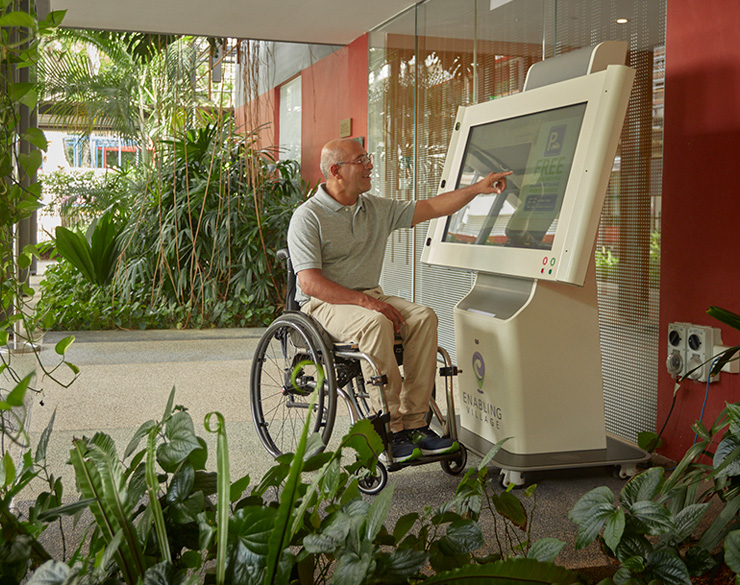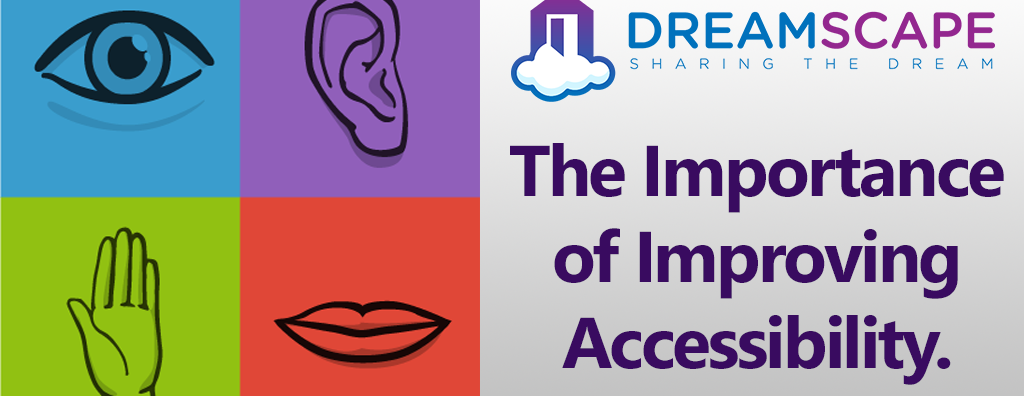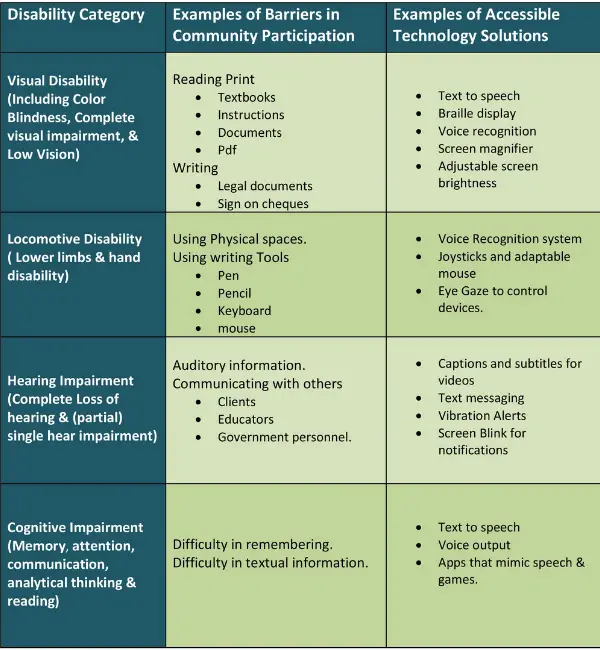Improving Accessibility for Users with Disabilities in Canada

Canadians with disabilities face unique accessibility barriers that can hinder their ability to participate fully in society. To address these challenges, it is imperative for businesses, organizations, and government agencies to take proactive measures to enhance accessibility. Here are some key ways to improve accessibility for individuals with disabilities in Canada:

Physical Accessibility:

- Ensure that entrances, pathways, and exits are wheelchair accessible and free of obstacles.
- Provide ramps and elevators for vertical movement.
- Install accessible restrooms with wide stalls, grab bars, and adjustable fixtures.
- Designate accessible parking spaces close to entrances.
Sensory Accessibility:
- Provide tactile signage with Braille and raised lettering for individuals with visual impairments.
- Install audible signals and lighting systems for individuals with hearing impairments.
- Offer assistive listening devices and closed captioning for audio content.
- Control lighting and reduce noise levels to support individuals with sensory sensitivities.
Cognitive Accessibility:
- Use clear and concise language in communication materials.
- Provide alternative options for accessing content, such as large print, audio recordings, or simplified versions.
- Break down complex tasks into smaller steps and provide instructions in a logical manner.
- Allow for extra time for individuals with cognitive disabilities to complete tasks.
Digital Accessibility:
- Ensure websites and online platforms are compatible with assistive technologies, such as screen readers and magnifiers.
- Use descriptive alt text to make images accessible to visually impaired individuals.
- Provide closed captioning and transcripts for videos and audio recordings.
- Implement keyboard accessibility features for navigation and functionality.
Service Accessibility:
- Train staff on how to interact respectfully with individuals with disabilities.
- Offer assistive devices, such as wheelchairs, magnifiers, or communication boards.
- Provide accessible seating arrangements in public spaces.
- Respect and accommodate the communication needs of individuals with speech or language impairments.
Legislation and Standards:
- Abide by accessibility legislation and standards, such as the Accessibility for Ontarians with Disabilities Act (AODA) and the Government of Canada Web Accessibility Standards.
- Conduct regular accessibility audits and make necessary improvements.
- Establish policies and procedures to ensure ongoing accessibility efforts.
Collaboration and Consultation:
- Involve individuals with disabilities in the design and implementation of accessibility initiatives.
- Join accessibility organizations and connect with disability advocates.
- Share best practices and learn from others’ experiences.
By implementing these measures, businesses, organizations, and government agencies can create a more inclusive and accessible society for Canadians with disabilities. It is essential to remember that accessibility is not just a legal requirement but a moral imperative to ensure that everyone has the opportunity to participate fully and equally in the community.## How Canadians Can Improve Accessibility For Users With Disabilities
Executive Summary
Accessibility for users with disabilities is crucial for ensuring an inclusive and equitable society. In Canada, there are significant opportunities to improve accessibility across various sectors, including digital content, physical spaces, and transportation. This article explores the importance of accessibility, identifies key subtopics, and provides practical tips for Canadians to enhance accessibility for users with disabilities.
Introduction
Accessibility is not just about meeting legal requirements; it is about creating an inclusive society where everyone has the opportunity to participate fully. By making our websites, buildings, and public spaces accessible, we are creating a more just and welcoming environment for all Canadians.
FAQs
Q: What is the definition of accessibility for users with disabilities?
A: Accessibility refers to the practice of designing products, services, and environments so that they can be used by people with disabilities to the same extent as those without disabilities.
Q: Why is accessibility so important?
A: Accessibility ensures equal opportunities for individuals with disabilities in all aspects of life, including education, employment, and social participation.
Q: What are some of the common barriers to accessibility?
A: Common barriers include physical obstacles, lack of assistive technology, inaccessible digital content, and attitudinal barriers.
Subtopics for Improving Accessibility
1. Website Accessibility
- Use semantic HTML: Use headings, lists, and tables to structure your content.
- Provide text alternatives for images: Ensure that images have descriptive alt text for screen readers.
- Use accessible colors and fonts: Choose colors that provide sufficient contrast and avoid using overly decorative fonts.
- Test your website with assistive technology: Use screen readers and keyboard navigation to ensure accessibility for users with visual or mobility impairments.
2. Physical Space Accessibility
- Provide ramps and elevators: Ensure that buildings are equipped with ramps and elevators for easy access.
- Install accessible washrooms: Provide washrooms that meet the needs of individuals with mobility impairments.
- Use tactile signage and wayfinding: Utilize Braille, tactile maps, and other assistive technologies to guide individuals with visual impairments.
- Train staff on accessibility: Educate staff on accessibility principles and best practices for assisting customers with disabilities.
3. Transportation Accessibility
- Provide accessible public transportation: Ensure that buses, trains, and other public transportation options are equipped with ramps, lifts, and accessible seating.
- Consider paratransit services: Offer specialized transportation services for individuals unable to use regular public transportation.
- Improve curb cuts and pedestrian crossings: Provide safe and accessible crossings at intersections and other pedestrian areas.
4. Digital Content Accessibility
- Use accessible document formats: Create documents in accessible formats such as PDF/A, HTML, and ePub.
- Provide transcripts for audio and video content: Transcripts allow individuals with hearing impairments to access audio-visual information.
- Use closed captions and subtitles: Closed captions and subtitles enable individuals with hearing impairments or deaf/hard of hearing to follow spoken content.
5. Attitudinal Barriers
- Challenge stereotypes and assumptions: Educate the public about the capabilities of individuals with disabilities.
- Promote inclusive language: Use respectful and non-stigmatizing language when referring to people with disabilities.
- Foster a welcoming and supportive environment: Create a welcoming and inclusive atmosphere where people with disabilities feel valued and respected.
Conclusion
Improving accessibility for users with disabilities is an ongoing process that requires collaboration from individuals, organizations, and governments across Canada. By understanding the importance of accessibility, implementing practical solutions, and challenging attitudinal barriers, we can create a more inclusive and equitable society where everyone has the opportunity to reach their full potential.
Keyword Tags
- Accessibility
- Disabilities
- Digital Accessibility
- Physical Accessibility
- Attitudinal Barriers
